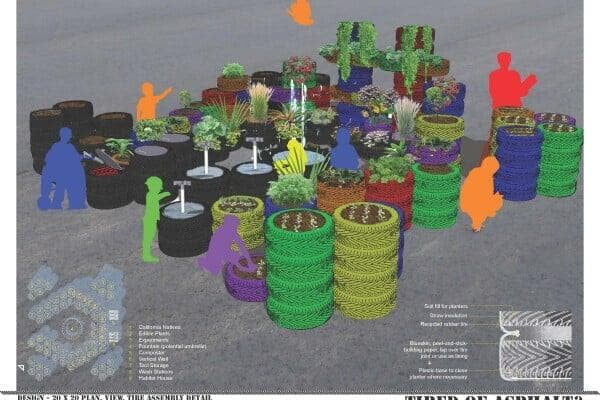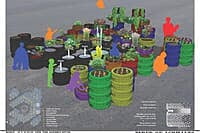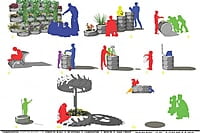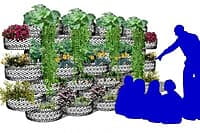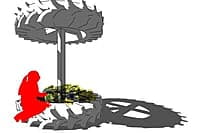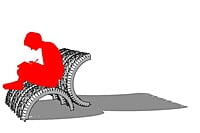Tired of Asphalt
In many cities, children grow up in a concrete jungle. We propose to re-‘tire’ your asphalt and introduce children to a green jungle, a jungle built with tires! As a medium for garden building, tires are modular and versatile. They can easily be stacked, cut and converted into numerous garden features. Tires create a raised garden from reused materials which has many advantages: it provides clear delineated spaces for teachers to divide up for group projects, the gardens are easily made wheelchair accessible, and they are more ergonomic for all students. Levels can also be used to distinguish areas for older students and their experimental plots, using height to deter unwanted or unintentional meddling. However, in our garden, tires have become more than just pots. They can be crafted into components such as vertical wall garden, tool chests, wash stations, compost barrels, rain barrels, bird feeders, bird houses, sundials, umbrellas for shade and even watering cans. The edges of the tires also serve a dual purpose as makeshift seats for breaks and for more formal teacher-initiated instruction. Furthermore, tires can be painted by the students to liven up the school yard and diminish the visual weight of the asphalt. This project can be undertaken by anyone as the tools, materials, and design are easily accessible to schools in every type of neighborhood.
The components described above can be mixed and matched in any way. We provided only one of the countless possible configurations of the various components. The Los Angeles Unified School District will be able to provide a catalogue of components to assist teachers in designing their own garden according to the needs of their students. In our design, we arranged several tire components to create a space that addressed all five themes. We incorporated composters, bird housing and local flora in the tires. We also provided tall, secluded planters for intermediate level student-directed and variable sensitive plant experiments. A wall was built to incorporate vertical, more efficient use of space. For teachers who wish to practice reading and writing skills, tires can be used easily as chalk boards. Furthermore, the circular design creates an amphitheater-like space where a teacher can address students in a more formal manner when necessary. Planters can easily be used to grow vegetables and teach about intensive farming practices.
For example, Native people in Ontario grew ‘three sisters’ on one small mound: corn, climbing beans and squash. Wash stations and tool boxes near the entrance ensure students have cleaned up before going back to the classroom. The design allows students to work in groups or as individuals in a garden setting learning both team-building and a sense of ownership. Teachers will be able to facilitate students as they learn without being a ‘sage on a stage’. The design we provided is however only one possibility. Only the schools themselves will know the needs of their students and their communities, and this design can provide them with that unique support in their asphalt re-tire-ment project.
Materials
The materials required are recycled tires, Blueskin® building wrap, straw, soil, and plants. Some accessories would also be required for special components such as the wash stations, tool chest and composter. Tools required for installation are hack saws for cutting tires, and scissors for cutting building wrap. Please refer to the technical detail for assembly details.
Recycled tires can be obtained from local garages and landfills for free or minimal cost. Moreover, this garden can be created without digging up the asphalt. The majority of the cost will thus come from the purchase of soil, tools, and plants, which are standard to the implementation of any school garden.
